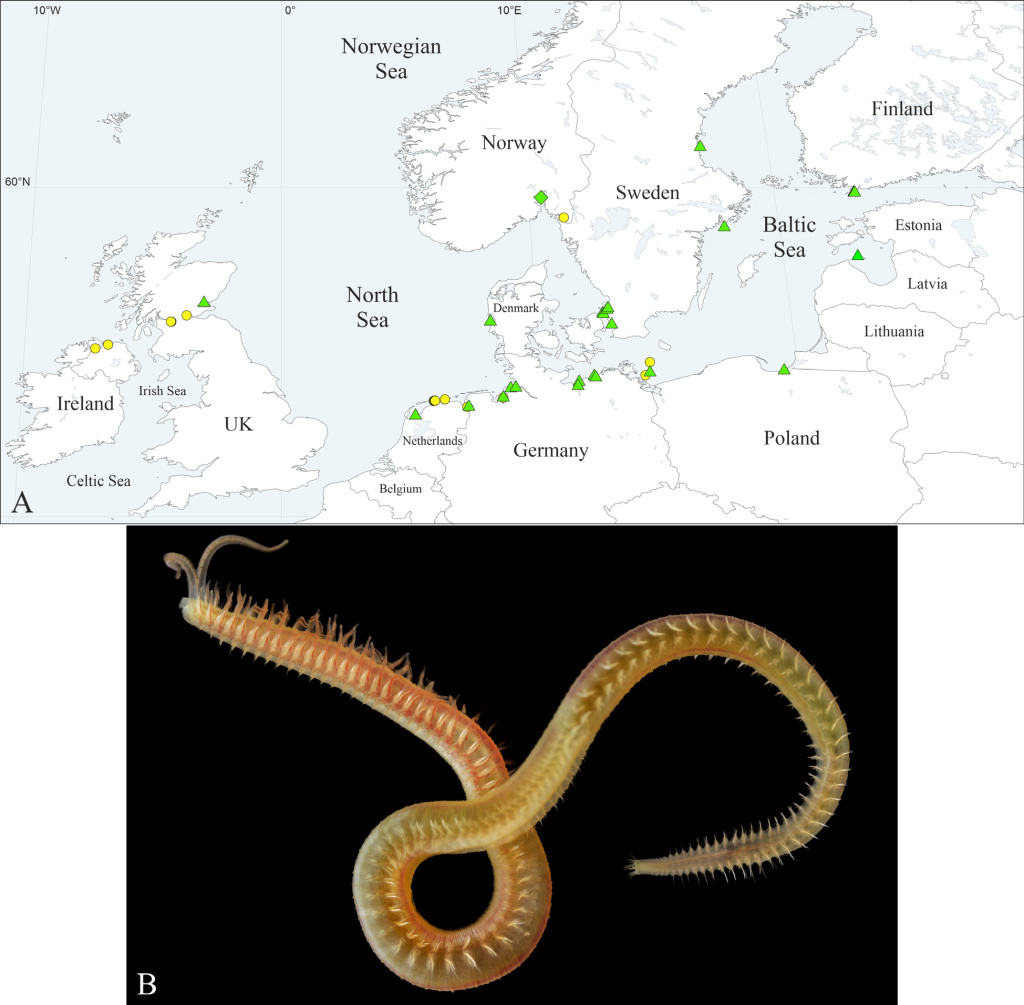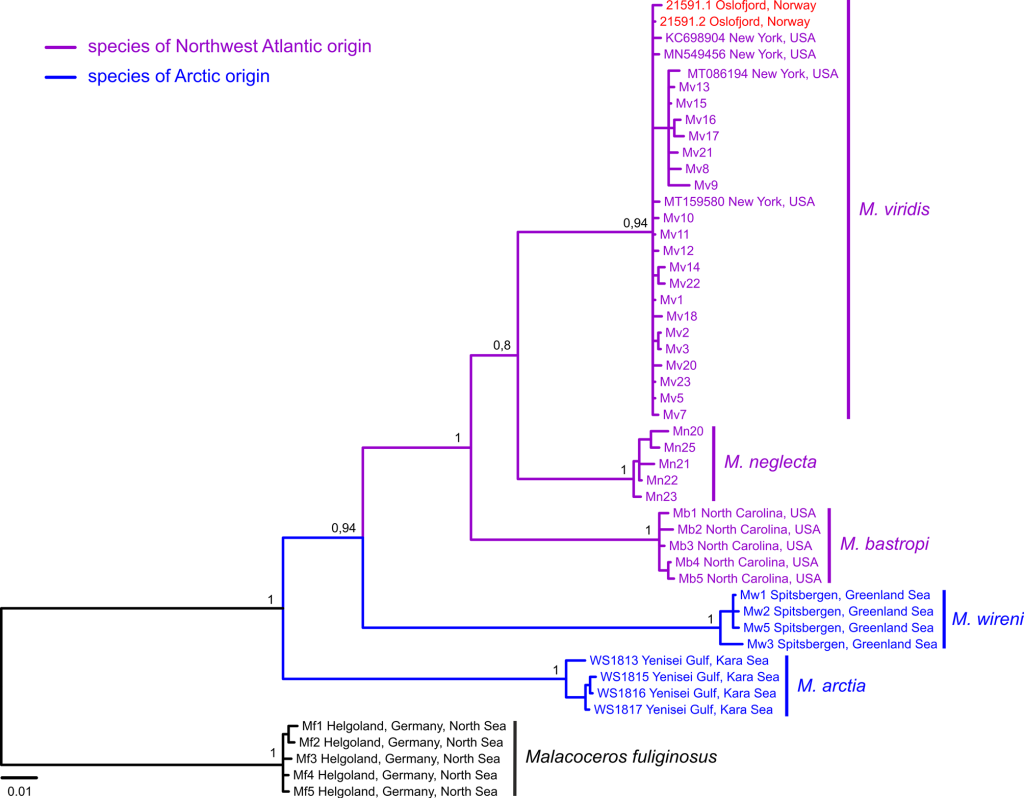In October 2018, Vasily Radashevsky from the Russian Academy of Sciences briefly visited our collection to go through the material of Spionidae, marine worms of the phyla Annelida, the segmented worms. Vasily is very enthusiastic about spionids in all there facets and he is one of the world’s experts on them (if not the one). He was not only interested in looking at old material, but also to get some new ones. Hence, Lutz and I took the small dinghy and went out with him to Sætre. Therefore, we probed the waters around Torvøya with a small, hand-held grabber. Even though it was already early October we had a very nice day out on the Oslofjord (see the featured picture). The day after the fieldtrip, Vasily come to my office and was really excited. We had found Marenzellaria viridis for the first time in Norway.
Invasive Marenzellaria species such as M. viridis in the North and Baltic sea had first been reported in the late 1970s–early 1980s in 1985, respectively. In 1990s to 2000s, the populations grew rapidly in these regions. It was also due to this that I as a PhD student at University of Osnabrück heard the first time about M. viridis in a presentation by Ralf Bastrop from the University of Rostock. Their emergence stimulated numerous studies on their distribution, morphology, reproductive biology, physiology, ecology, bioturbation and genetics. However, it also become clear that the taxonomy of the genus Marenzellaria was not settled and especially if all species were M. viridis or some of them were another species, M. wireni. Using molecular tools in the end one could distinguish
three species of Marenzelleria occurring in North European waters, M. viridis, M. neglecta and M. arctia. However, until now, no Marenzelleria was reported from Norwegian waters, except for M. wireni from Spitsbergen.

Using different molecular markers we identified the Oslofjord specimens and confirmed that they belonged to M. viridis (see the tree below). Besides, confirming the identity. We also summarized and mapped all available records of M. viridis (Verrill, 1873) worldwide as well as from all Marenzelleria species from North America, the native range of M. viridis. We distinguished in the summary also those records based on morphology from the ones confirmed or only based on molecular data. Finally, we also reported new records for an undescribed Marenzelleria sp. from Baffin Is., Nunavut, Canada, and for M. neglecta from Washington, USA. If you want to read the whole story including amended descriptions for M. arctia, M. bastropi, M. neglecta, M. viridis and the undescribed one you can read the paper (Radashevsky et al., 2021. A review of the worldwide distribution of Marenzelleria viridis, with new records for M. viridis, M. neglecta and Marenzelleria sp. (Annelida: Spionidae), Zootaxa 5081 (3): 353–372).
.

![]()
